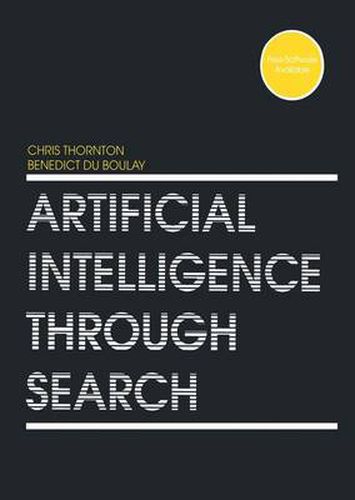Readings Newsletter
Become a Readings Member to make your shopping experience even easier.
Sign in or sign up for free!
You’re not far away from qualifying for FREE standard shipping within Australia
You’ve qualified for FREE standard shipping within Australia
The cart is loading…






This title is printed to order. This book may have been self-published. If so, we cannot guarantee the quality of the content. In the main most books will have gone through the editing process however some may not. We therefore suggest that you be aware of this before ordering this book. If in doubt check either the author or publisher’s details as we are unable to accept any returns unless they are faulty. Please contact us if you have any questions.
This is an important textbook on artificial intelligence that uses the unifying thread of search to bring together most of the major techniques used in symbolic artificial intelligence. The authors, aware of the pitfalls of being too general or too academic, have taken a practical approach in that they include program code to illustrate their ideas. Furthermore, code is offered in both POP-11 and Prolog, thereby giving a dual perspective, highlighting the merits of these languages.
Each chapter covers one technique and divides up into three sections:
a section which introduces the technique (and its usual applications) andsuggests how it can be understood as a variant/generalisation of search;
a section which developed a “low’-level (POP-11) implementation;
a section which develops a high-level (Prolog) implementation of the technique.
The authors also include useful notes on alternative treatments to the material, further reading and exercises.
As a practical book it will be welcomed by a wide audience including, those already experienced in AI, students with some background in programming who are taking an introductory course in AI, and lecturers looking for a precise, professional and practical text book to use in their AI courses.
About the authors:
Dr Christopher Thornton has a BA in Economics, an Sc in Computer Science and a DPhil in Artificial Intelligence. Formerly a lecturer in the Department of AI at the University of Edinburgh, he is now a lecturer in AI in the School of Cognitive and Computing Sciences at the University of Sussex.
Professor Benedict du Boulay has a BSc in Physics and a PhD in Artificial Intelligence. Previously a lecturer in the Department of Computing Science at the University of Aberdeen he is currently Professor of Artificial Intelligence, also in the School of Cognitive and Computing Sciences, University of Sussex.
$9.00 standard shipping within Australia
FREE standard shipping within Australia for orders over $100.00
Express & International shipping calculated at checkout
This title is printed to order. This book may have been self-published. If so, we cannot guarantee the quality of the content. In the main most books will have gone through the editing process however some may not. We therefore suggest that you be aware of this before ordering this book. If in doubt check either the author or publisher’s details as we are unable to accept any returns unless they are faulty. Please contact us if you have any questions.
This is an important textbook on artificial intelligence that uses the unifying thread of search to bring together most of the major techniques used in symbolic artificial intelligence. The authors, aware of the pitfalls of being too general or too academic, have taken a practical approach in that they include program code to illustrate their ideas. Furthermore, code is offered in both POP-11 and Prolog, thereby giving a dual perspective, highlighting the merits of these languages.
Each chapter covers one technique and divides up into three sections:
a section which introduces the technique (and its usual applications) andsuggests how it can be understood as a variant/generalisation of search;
a section which developed a “low’-level (POP-11) implementation;
a section which develops a high-level (Prolog) implementation of the technique.
The authors also include useful notes on alternative treatments to the material, further reading and exercises.
As a practical book it will be welcomed by a wide audience including, those already experienced in AI, students with some background in programming who are taking an introductory course in AI, and lecturers looking for a precise, professional and practical text book to use in their AI courses.
About the authors:
Dr Christopher Thornton has a BA in Economics, an Sc in Computer Science and a DPhil in Artificial Intelligence. Formerly a lecturer in the Department of AI at the University of Edinburgh, he is now a lecturer in AI in the School of Cognitive and Computing Sciences at the University of Sussex.
Professor Benedict du Boulay has a BSc in Physics and a PhD in Artificial Intelligence. Previously a lecturer in the Department of Computing Science at the University of Aberdeen he is currently Professor of Artificial Intelligence, also in the School of Cognitive and Computing Sciences, University of Sussex.